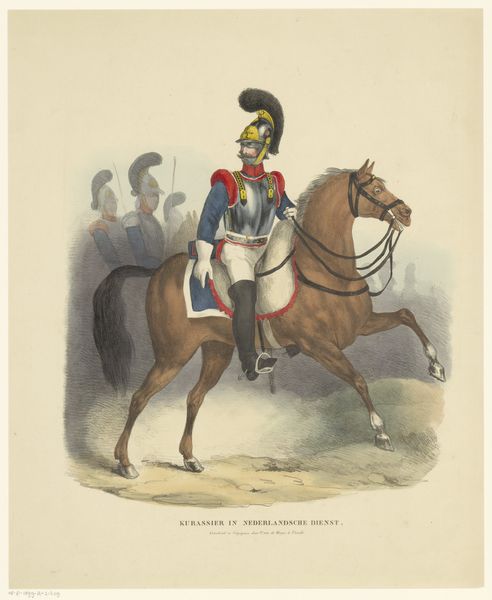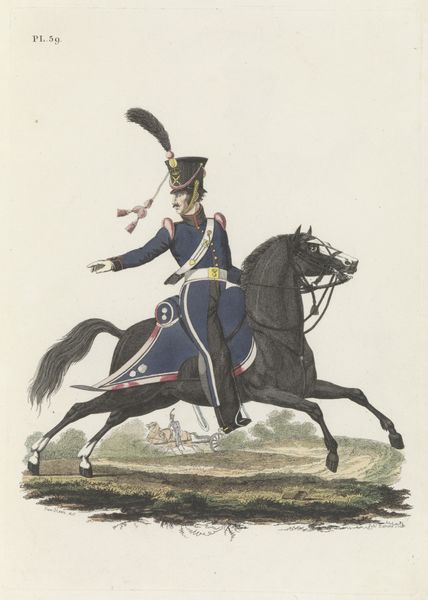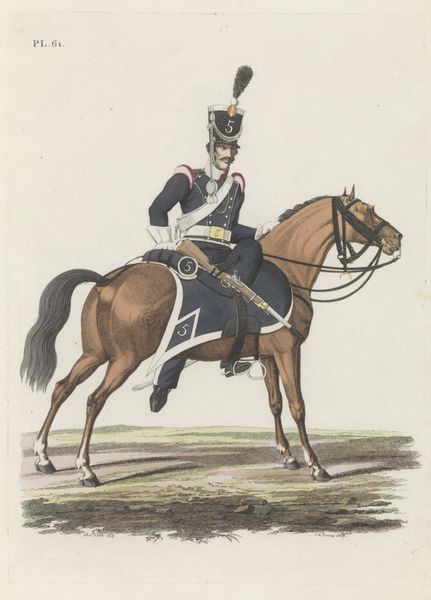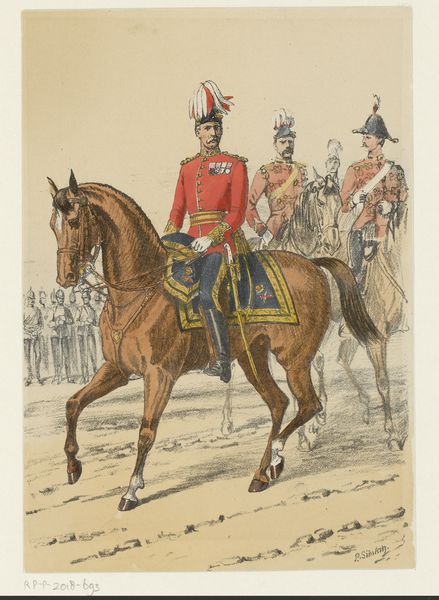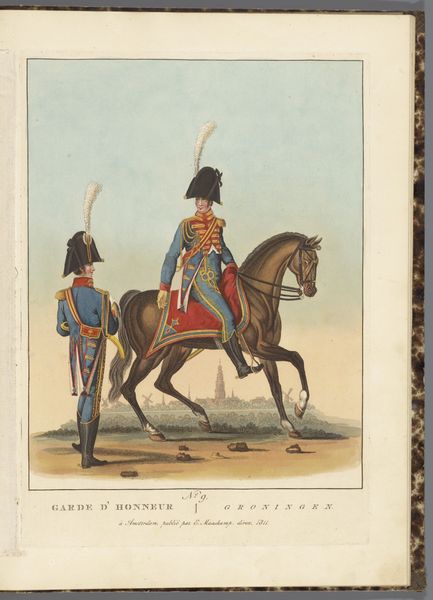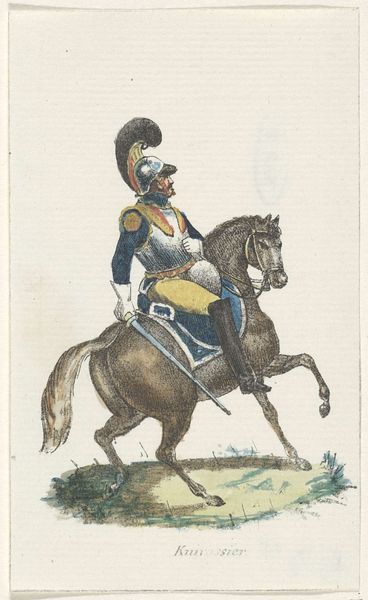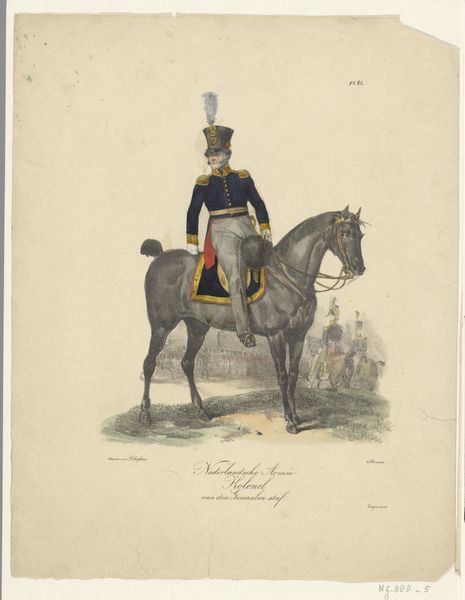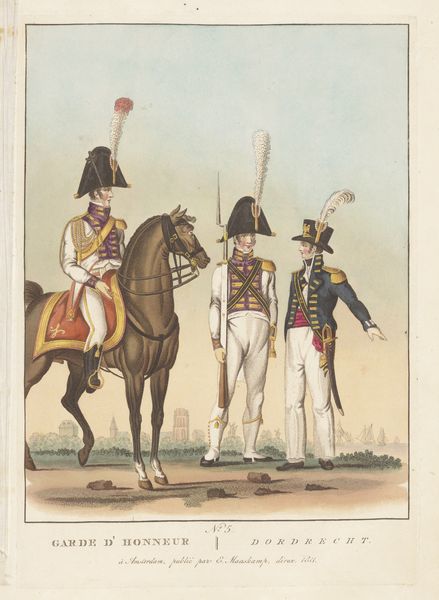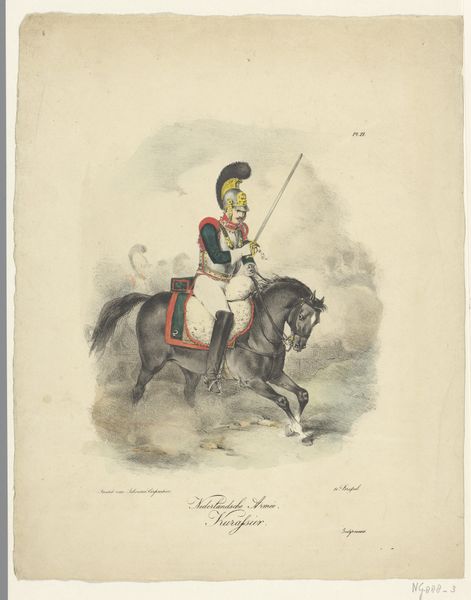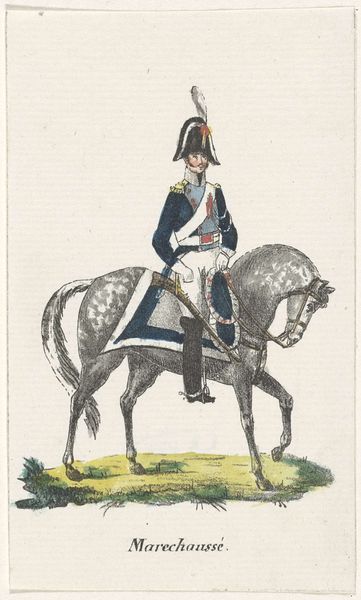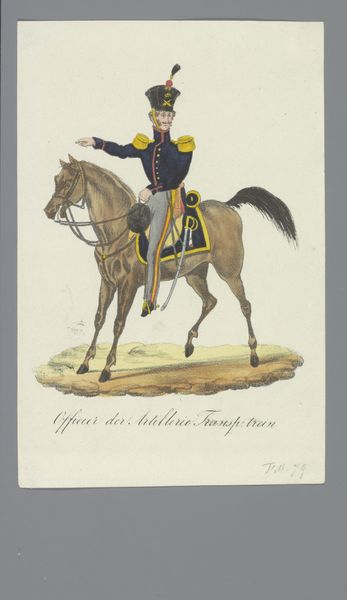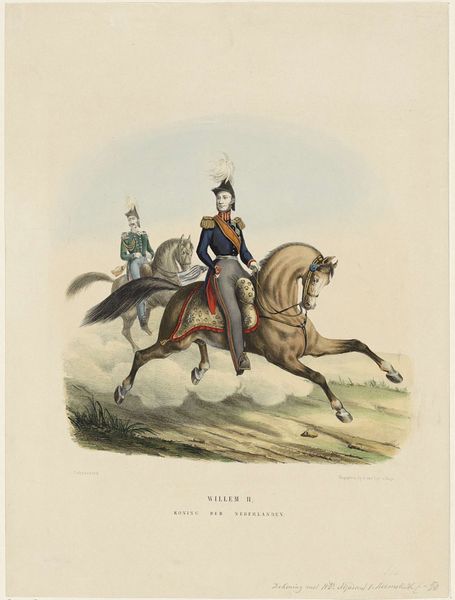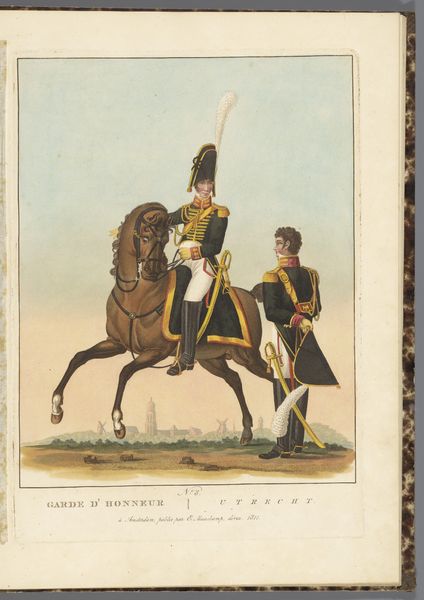
Dimensions: height 520 mm, width 425 mm
Copyright: Rijks Museum: Open Domain
Curator: Here we have Pieter Wilhelmus van de Weijer's "Soldaat te paard," created sometime between 1842 and 1880. It’s a watercolor and drawing piece currently housed in the Rijksmuseum. Editor: The energy! It practically leaps off the page. There's a real tension in the line work – the confident strokes that delineate the soldier versus the hazy, almost dreamlike, background. It’s wonderfully imbalanced. Curator: Precisely. Consider how the romanticism movement often depicted heroic figures against grand landscapes to inspire nationalistic feelings. While van de Weijer utilizes this trope to an extent, note the emphasis on the details of the soldier's uniform: the trim, the buttons, the quality of the leather. This suggests an attention to material realities. Editor: You know, I am particularly struck by the choice of watercolor and drawing. What could have been achieved through painting is rendered in a lighter, perhaps more economical, manner. And the subject itself—a mounted soldier –is so tied to specific socioeconomic systems around access to resources and materials. This contrasts beautifully with the medium's relative accessibility compared to oil painting, or even a commission for sculpture in bronze. Curator: A compelling point. The application of watercolor adds a certain ethereality which is in direct counterpoint to the material rigidity of his attire. Look at the steely glint of the sword, an accessory not to be trifled with as this Romantic hero would. The very tangible cost of such equipment during this period should be brought into discussion as well. Editor: Absolutely. We have to think about the work and labour of outfitting such a soldier. From textiles to metalwork and leather crafting - these elements root this image within the daily reality of nineteenth-century economics. Also, to produce this image and others, the costs of obtaining pigments, paper, and drawing implements would have to be taken into consideration by both the artist and the eventual patrons and audience. Curator: It's a fascinating intersection of artistry, nationalism, and material culture. It certainly makes for rich discourse regarding societal hierarchies. Editor: Agreed. A valuable exploration for today’s audience to understand the complexities of image-making within shifting economies.
Comments
No comments
Be the first to comment and join the conversation on the ultimate creative platform.
